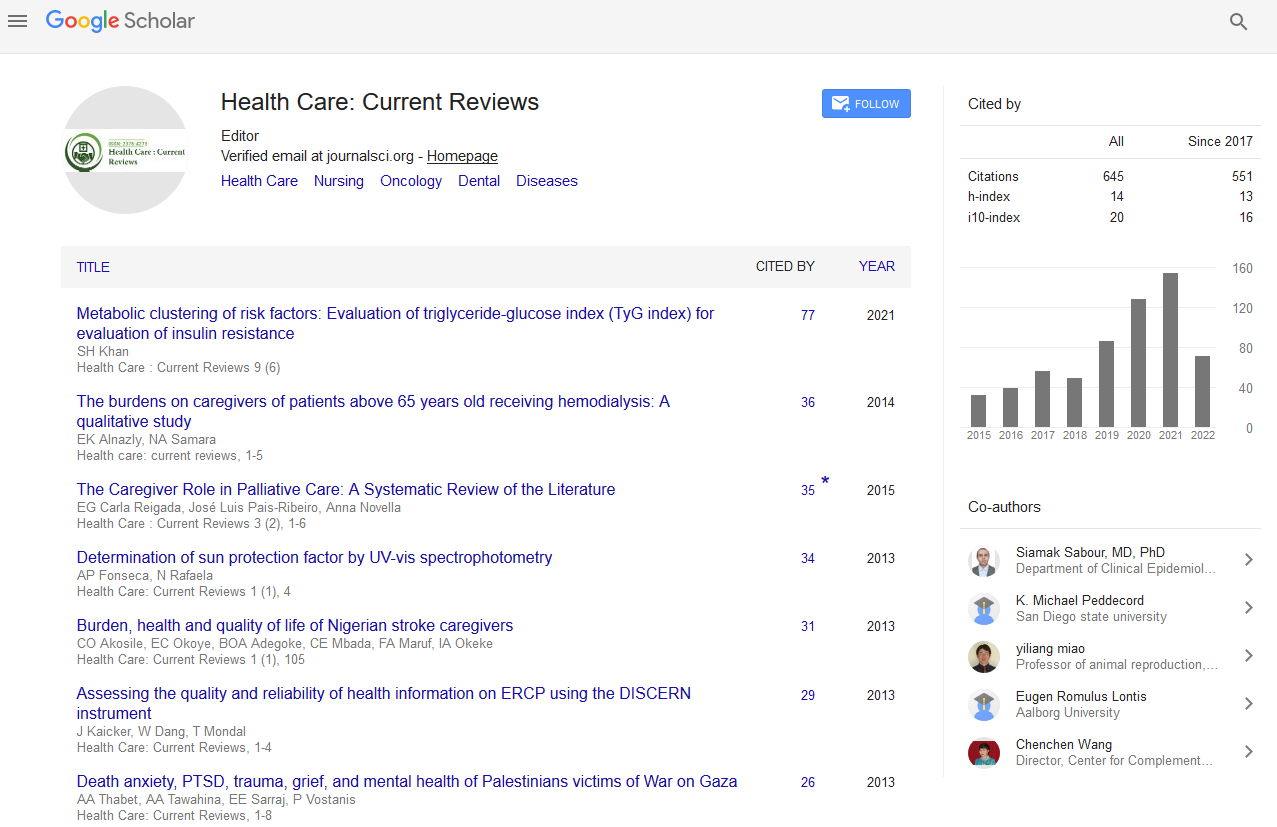PMC/PubMed Indexed Articles
Indexed In
- Open J Gate
- Academic Keys
- RefSeek
- Hamdard University
- EBSCO A-Z
- Publons
- Geneva Foundation for Medical Education and Research
- Google Scholar
Useful Links
Share This Page
Journal Flyer

Open Access Journals
- Agri and Aquaculture
- Biochemistry
- Bioinformatics & Systems Biology
- Business & Management
- Chemistry
- Clinical Sciences
- Engineering
- Food & Nutrition
- General Science
- Genetics & Molecular Biology
- Immunology & Microbiology
- Medical Sciences
- Neuroscience & Psychology
- Nursing & Health Care
- Pharmaceutical Sciences
THE PAST AND PRESENT OF HUMAN MOVEMENT RESEARCH: TOWARDS THE DESIGN OF HUMAN-LIKE ROBOTS
8th World Congress on Healthcare & Medical Tourism
November 17-18, 2016 | Dubai UAE
Kinda Khalaf
Khalifa University, UAE
Keynote: Health Care: Current Reviews
Abstract:
Two issues are presented in this paper: (i) A perspective on the development of computationally-based representation, modeling, control, and animation of human movement; and (ii) the role played by rigid body dynamics. The central nervous system (CNS) in humans is the most advanced and amazing natural system in existence. One needs all the tools: experimental, psycho-physical, developmental, neuroscience-based, and physiological methodologies, in addition to the computational method, if there is to be any hope of understanding such a system thoroughly. With respect to the computational method, study of movement is simpler than the study of other brain attributes: vision, speech, memory, learning, hearing, etc. Movement is distributed and spread over the body. It is more easily accessible to detailed observation. It is also subject to easier invasive and noninvasive measurement. Computational studies of human movement should facilitate the understanding of the spinal cord, and possibly the design of artifcial spinal cords for robots, humanoids and the injured. The spinal cord, in turn, being a rich two way access to the brain for distributed control, signal processing and signal transmission, should help in better understanding of brain function. One is led to computational models that are systematic and imitate natural human motion at di®erent levels of complexity and physiological accuracy. The models should allow for the insertion of ligaments, cartilage, muscles, and soft tissues. Particular representations of rigid body dynamics are needed for modeling the skeleton and joints with different degrees of freedom. Rigid body dynamics are also required for implementing contact and connection with the environment, or objects in the environment, as well as other attributes of human movement in work, dance, competition, locomotion, etc. Needless to say, the models are expected to support and complement experimental and other studies that deal with human posture and movement.
Biography :
Kinda Khalaf received her B.S. (Summa Cum Laude with Distinction) and M.S. (Honors) degrees from the Ohio State University, USA. Her Ph.D., also from OSU, is in Biomechanics/ Computational Biomechanics, specializing in Biomaterials, and Dynamic modeling and control. Dr. Khalaf has held faculty appointments in Engineering and Medicine at several prestigious universities including the University of Miami and the American University of Beirut, and currently serves as associate chair of the Department of Biomedical Engineering at Khalifa University in Abu Dhabi. She has numerous publications in the areas of Orthopedic Biomechanics, Computational Biomechanics, biomaterials, and neuromusculoskeletal modeling and control Dr. Khalaf is on the list of International Who Is Who of Professionals. She has been awarded various awards and honors including the prestigious National Merit Scholar. She is currently the chairperson of the UAE branch of IEEE, EMBS, in addition to her membership is several professional organizations.
Email: kinda.khalaf@kustar.ac.ae


